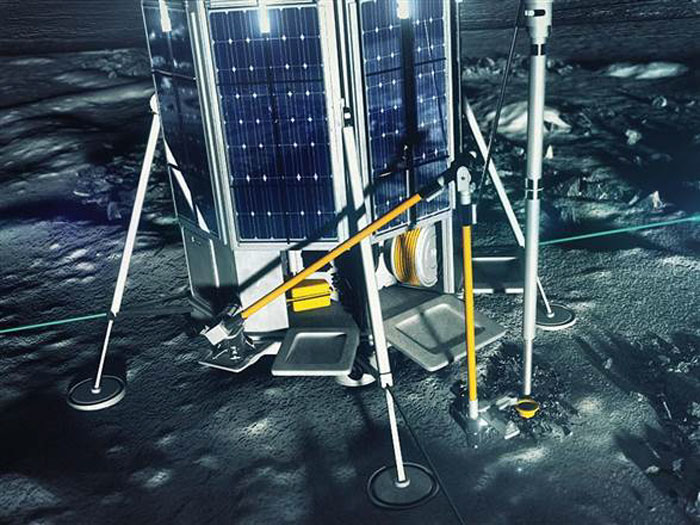.

Move over, Mars: A British-led venture called Lunar Mission One has begun a crowdfunding effort to send a robotic lander to the moon with a monster drill.
The first step of the plan is to raise $950,000 (£600,000) through a Kickstarter campaign. That money would finance Lunar Mission One's planning and management activities during the initial phase of what backers expect will be 10 years of preparation. The plan calls for additional sales, marketing, planning and development efforts to build up toward launch in 2024.
The centerpiece of the fundraising effort is an array of time capsules that Lunar Mission One expects to have its probe bury on the moon. The capsules would contain "digital memory boxes" that serve as extraterrestrial archives for the project's backers.
The Kickstarter campaign promises to "reserve your place in space" for a pledge of £60 ($94) or more — but other perks are going for as little as £3, or less than five U.S. dollars.
"Anyone from around the world can get involved for as little as a few pounds," David Iron, the founder of Lunar Missions Ltd. and the nonprofit Lunar Missions Trust, said in a statement. "Lunar Mission One will make a huge contribution to our understanding of the origins of our planet and the moon, and will inspire a generation to learn more about space, science and engineering — in the same way that my generation was inspired by the Apollo moon landings."
Lunar Mission One takes its place alongside other non-governmental space projects that hope to take advantage of crowdfunding — such as the Dutch-based Mars One project to prepare reality-TV contestants for one-way trips to Mars, or the student-led Time Capsule to Mars campaign.
Details to come
Like those other projects, Lunar Mission One has not yet firmed up the details surrounding launch and mission operations. Success is not assured; fund-raising failure is definitely an option. However, the moon venture does have an impressive list of supporting organizations — with RAL Space, based at Britain's Rutherford Appleton Laboratory, serving as the overall technical adviser for the project's first stage.
RAL Space has played a role in developing more than 200 space missions, including the European Space Agency's Rosetta mission to a comet. "Our experience in multiple and complex space missions will play a vital role in helping coordinate the project," said Richard Holdaway, director of RAL Space.
Other partners include University College London, the Open University and the Institute of Education. Endorsements have come in from such luminaries as Ian Taylor, a former British science minister who now chairs Lunar Missions Ltd.; millionaire space passenger Richard Garriott; and Lord Martin Rees, Astronomer Royal.
"The project is plainly ambitious and challenging," Rees said in a statement, "but its special cultural and scientific features should generate wide interest and support. It deserves to succeed."
Drilling deep
The mission plan calls for launching a lander to the moon's south polar region in 2024. The lander's scientific instruments would include a drill capable of bringing up samples from depths of at least 65 feet (20 meters) and potentially as far down as 330 feet (100 meters).
The samples would be analyzed by lab instruments built into the lander, with the results beamed back to Earth. Lunar Mission One's findings could provide new insights into the origins and evolution of the moon and our own planet — and show whether the lunar subsurface contains enough water to support human existence at a future moon base.
The time capsules could include private digital archives of text, photographs, music and video — and the project's backers said they'll make provisions for storing physical strands of hair as well. There would also be a "public archive" containing a history of civilization and a survey of Earth's biosphere. That archive would be compiled by a number of institutions around the globe, and would be made freely available online as an educational tool, the project's backers said.
One scenario, laid out in Lunar Mission One's promotional materials, calls for dropping the capsules down the sampling holes created by the lander's drill.
Lunar Mission One isn't the only game in town when it comes to commercial lunar exploration: The Golden Spike Company says it will offer two-person moon trips for as little as $1 billion, and 18 teams are working to send landers to the moon and claim a share of the $30 million Google Lunar X Prize.
Quelle: NBC
4736 Views
